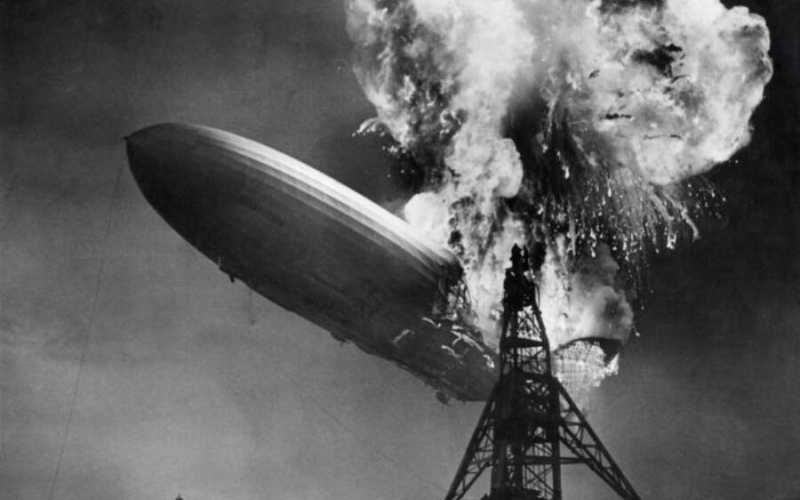Few events in aviation history evoke as much tragedy and drama as the Fiery Hindenburg airship disaster. On May 6, 1937, the majestic German airship LZ 129 Hindenburg met a catastrophic end while attempting to land at the Naval Air Station Lakehurst in Manchester Township, New Jersey. This fiery tragedy not only stunned the world but also delivered a devastating blow to the promising era of airship travel—once seen as the luxurious future of transatlantic transport.
The Hindenburg Airship
The Hindenburg stood as a towering achievement of German engineering. At 804 feet long, it was the largest airship ever constructed. Offering swift and opulent transatlantic journeys, it represented the pinnacle of 1930s aviation. Yet, beneath its grandeur lurked a fatal flaw: the airship relied on highly flammable hydrogen gas for lift.
Anatomy of the Fiery Hindenburg Airship Disaster
As the Hindenburg approached its docking station that fateful afternoon, it suddenly erupted into flames. Within seconds, fire consumed the airship, killing 36 people—13 passengers, 22 crew members, and one ground worker. Investigators have debated the precise cause of the fire for decades. However, many believe that a hydrogen leak—possibly caused by structural stress and worsened by a recent storm—mixed with atmospheric oxygen and ignited from a static spark.
Eyewitnesses described the horrifying scene as flames engulfed the ship’s frame in under a minute. Photographs and radio broadcasts captured the disaster in real time, sending shockwaves around the globe and securing the Hindenburg’s place as one of aviation’s most infamous tragedies.
The Impact of the Fiery Disaster
Modern researchers have revisited the Hindenburg disaster, focusing on the powerful visual documentation from media outlets like The New York Times. One striking image shows the burning airship crashing to the ground, illuminating the silhouettes of onlookers near the wreckage—a haunting snapshot of human loss. Paired with live radio coverage, these images amplified the emotional impact and brought the event vividly into public view.
The End of an Era
The Fiery Hindenburg airship disaster didn’t just end lives—it ended an era. Until that moment, airships had offered a glamorous alternative to sea voyages, boasting panoramic views and long-distance comfort. But the risks of using hydrogen proved insurmountable. In the wake of the disaster, engineers and airlines abandoned hydrogen-filled airships in favor of more reliable and safer aircraft.
This turning point forced the aviation industry to reevaluate its standards. The catastrophe spurred sweeping reforms in air safety and accelerated the shift toward airplanes, which soon came to dominate commercial air travel.
Sources: The New York Times
Don’t forget to tune in…
If you’ve enjoyed this article, there are also articles on the construction of the Panama Canal, and the Great Wall of China.
You can now tune in to the full audio version of this week’s blog on the Bells Books Blog Podcast, or it is now available on Amazon Music/Audible, Apple Podcasts, Castbox, Deezer, iHeart Radio, JioSaavn, Podcast Addict, Podchaser, Spotify, and Spreaker.
Thank you for joining me this week as I explore some a few historic finds in unlikely places!
If you’ve enjoyed this article, I encourage you to sign up for my weekly blog. When you do so you will get a free copy of Yesteryear’s Ruin, the prequel to my new Case 47 series.
Until next time, keep your curiosity alive and your imagination ignited— and as always, keep the past alive!





 “Yesteryear’s Ruin” captures the essence of human resilience in the face of unimaginable loss. Through a narrative that weaves together love, despair, and the quest for redemption, this historical psychological thriller invites readers into a world where the past is not merely a memory, but a realm that may hold the key to our deepest desires and darkest fears.
“Yesteryear’s Ruin” captures the essence of human resilience in the face of unimaginable loss. Through a narrative that weaves together love, despair, and the quest for redemption, this historical psychological thriller invites readers into a world where the past is not merely a memory, but a realm that may hold the key to our deepest desires and darkest fears.